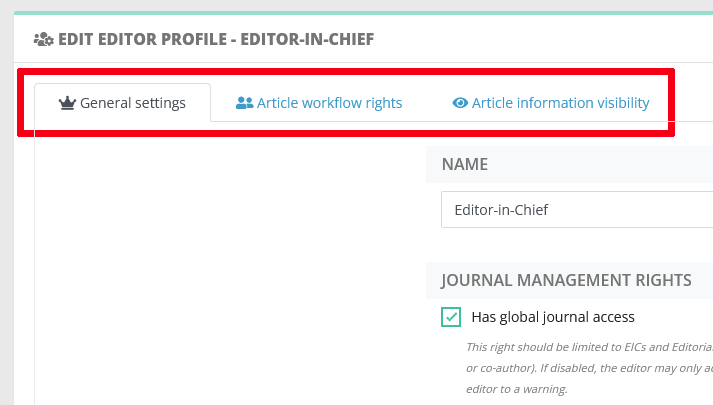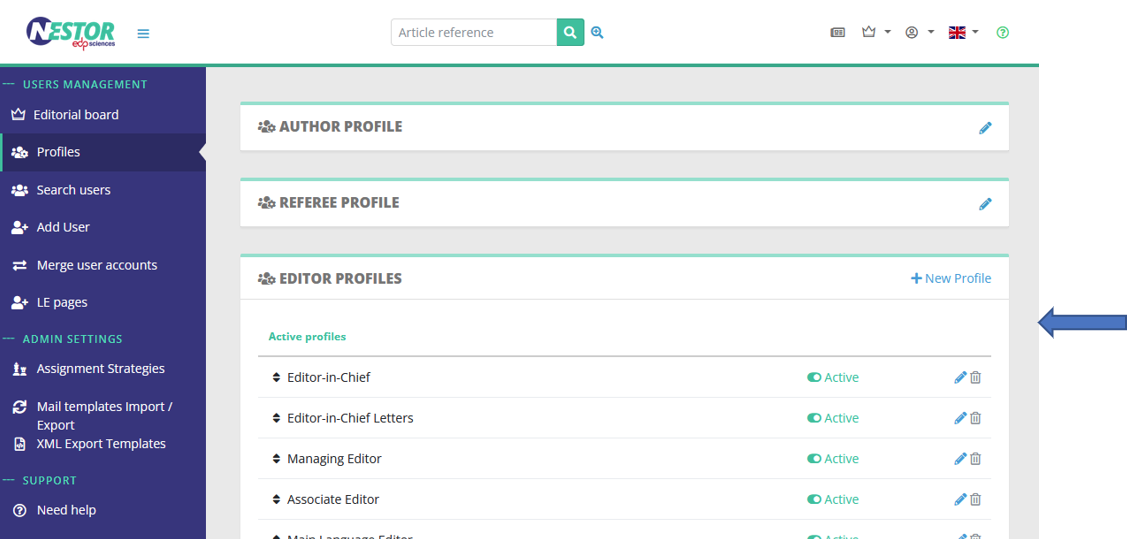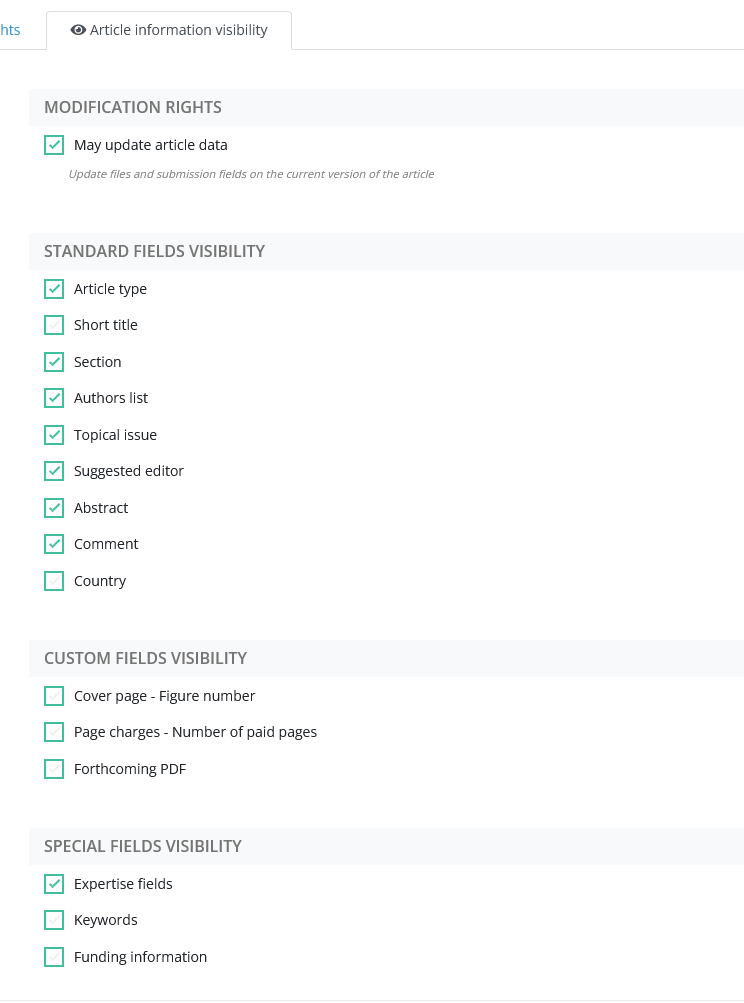Editor profiles
WhenContrary ato userthe isauthor anand editor,referee he must have anprofiles, editor profileprofiles definedare innot his account.unique. It is very common for a journal to configure several profiles.profiles, Each profile can have awith different setsets of rights,right. This is because theyprofiles are used buby people with different people.tasks regarding articles. Common profile examples of profiles are:
- Editor-in-Chief
- Editorial assistant
- Associate editor
- Copyediting editor
- Production editor
ConfigurationThe configuration can be found here:
Each editor profile getshas specific settings. Settings are sorted by family:
 |
- General settings define global journal rights for this profile:
- Access to global information and dashboards
- Access to administrative rights: does the user can configure the journal?
- Editorial responsibility
- Article workflow rights define how this profile can interact with an article, especially:
- Can this profile assign other editors? (see assignation workflow)
- Can this profile invite referees? (see peer review workflow)
- Proposing or taking decisions (see decision workflow)
- Article information visibility defines what the profile can see on an article. Indeed, an article can store a lot of different information, sometimes not relevant to all editors. Typically, scientific profiles might not be interested by production or copyediting notes. For this purpose, the profile visibility can be finely tuned here:


